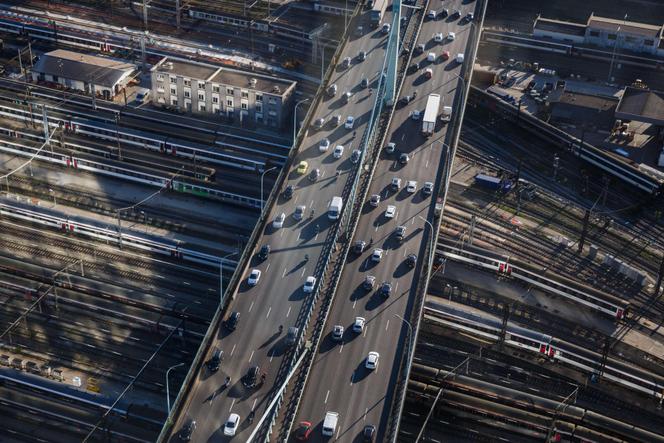


Less fast, less high, less loud. The day after the closing ceremony of the Paralympic Games, Anne Hidalgo announced on Monday, September 9, that the speed limit on the Parisian ring road would be lowered from 70 km/h to 50 km/h starting on October 1. "It's a public health measure for the 500,000 people who live near the ring road," justified the Paris mayor in an interview with the newspaper Ouest-France on August 31.
When presenting her plans for the year, in January, the Socialist mayor had promised that the new measure would come after the Games. Lowering the speed limit to 50 km/h is one of the measures in the capital's 2024-2030 climate plan, along with making permanent the carpooling and public transport lane that was tried out during the Games.
The Paris mayor's announcement has been strongly criticized by her right-wing municipal opposition and the entourage of Valérie Pécresse, the conservative president of the Paris region, denouncing a "brutal" decision and "the absence of impact studies." It is also contested by the government, which wants to keep "its say."
The thorny question of the future of the 35-kilometer ring road that has encircled Paris since 1973, and on which over a million vehicles drive a day, is not new. In 2019, a Paris Council information and assessment mission recommended some 50 measures, including a 50 km/h speed limit and dedicated lanes to transform this urban freeway, "a source of multiple pollutions," into a simple urban boulevard.
The two main pollutants generated by the "ring road" are noise pollution and emissions of fine particles and nitrogen oxides, which adversely affect air quality. The speed limit had already been reduced from 90 km/h to 80 km/h in 1993, then to 70 km/h in 2014. Elected representatives believe that a further reduction would be an effective measure to limit both noise and air pollution, two correlated nuisances, as shown by the first cross-mapping of air quality and noise levels in the Paris region, published in late May.
Produced by Bruitparif, a noise observatory, and Airparif, the organization responsible for monitoring air quality in the region, the maps revealed "very high" co-exposure near the boulevard in Paris and neighboring communes.
This air-noise co-exposure is a major challenge for nearby communities. Noise pollution is a source of annoyance, disrupts sleep, increases the risk of developing cardiovascular disease and diabetes and reduces learning capacity. Its social cost is estimated at €43 billion for the Paris region. Air pollution also leads to numerous health problems and is responsible for 7,900 premature deaths per year in the Paris region.
You have 55.75% of this article left to read. The rest is for subscribers only.
